In celebration of Superior Spider-Man’s “Goblin Nation” arc, over the next two months, I’m going to acknowledge what I consider to be the 10 best Green Goblin/Spider-Man storylines. I’m creating this list based on a full array of arbitrary, unscientific criteria: namely historical significance, artwork, creativity and my overall enjoyment of the story. I’ll run at least one entry a week until we reach my number one choice.
Here’s #3:
3. “Spider-Man Unmasked” – Amazing Spider-Man #39-40 (published August-September 1966): script by Stan Lee, pencils by John Romita Sr., inks by Mickey Demeo
When there’s hypothetically five different things about a particular Spider-Man storyline that make it iconic, then you know you’re dealing with an all-time classic.
1966’s “Spider-Man Unmasked” produced a number of landmark developments, both within the Spider-Man universe and throughout the larger comic book industry. Within two tightly plotted issues of Amazing Spider-Man, Spider-Man’s secret identity is finally discovered by someone who means him harm; the Green Goblin, the subject of a long-running mystery about his identity, is revealed as Norman Osborn, a friend of Peter’s (and later a “best friend”) in college; the Green Goblin’s origin is explained, including Osborn’s megalomania; Spider-Man decisively defeats the Green Goblin (and brings on Norman’s “amnesia” about his experience as a supervillain for the first time); and the seeds of romance are first planted between Peter and Gwen, a long-running storyline that would change the tone of Spidey comics for the rest of the 1960s and into the early 70s. And to top it all off, these issues mark the ASM debut of “Jazzy” John Romita Sr., an artist many consider the best Spidey-penciller of all-time.
So in another words, just a humdrum two-parter that is totally forgettable.
Actually, all kidding aside, this storyline is also the source of a fair bit of controversy within the Marvel community. With Romita taking over for the great Steve Ditko, there has long been a lot of talk and rumor-mongering about what specifically caused the rift between Ditko and Stan Lee. Ditko certainly marched to a beat of his own drum and towards the end of his run on ASM was basically penciling and plotting the book without any input from Stan, but the long-running rumor has been that the two fought over ASM #39’s big reveal. Allegedly, after teasing the Goblin’s secret identity for years, Lee was ready to pull the trigger and wanted a “name” character to be the guy. Ditko on the other hand, thought the payoff would be more satisfying if it the Green Goblin ended up being just some random guy that nobody had met before (similar to what was done with the Crime-Master in ASM #26-27). The disagreement reportedly led to Ditko leaving the book and Romita – who was okay with doing it Stan’s way – coming aboard to make history.
This story has been fueled by some interviews from some very credible sources, including Romita himself, but as time goes on, I just find it less plausible as the SOLE reason for the break-up. For one, it’s not like Norman Osborn was that much of a name at the time that it would have worked Ditko into such a lather. He had only been introduced by Ditko a few issues earlier. It wasn’t until years later that Norman because one of the “big names” in the Marvel Universe, a guy who could strike fear into the heart of nearly any superhero just by stepping into a room and being that perfect mix of Lex Luthor’s fiscally-fueled smarminess and the Joker’s unpredictable ruthlessness. My interpretation of the split has always been the identity of the Goblin was probably one of many disagreements that Ditko and Lee had been having, and Steve, who philosophically didn’t seem to mesh in with Stan’s charming yet over-the-top carnival barker act, left to go do his own thing.
The one thing I do believe without question regarding this storyline is that Romita purposely aped Ditko’s style under the impression that he’d be back on ASM within a couple of issues. You can tell that as clean and wonderful as Romita’s artwork is in these two issues, he never truly cuts lose and gives us the kind of stuff that would make him such a legend in the industry.
And still, despite all of the behind-the-scenes turmoil with Stan, Ditko and Romita, ASM #39-40 is as well-crafted as it is famous. Everything about this storyline just works as it should. Romita’s cover for ASM #39, is of course, just a beautiful piece of artwork that also serves as some serious bait for readers both hardcore and casual. The first time I saw ASM #39 (I wish I could say where or when, but I have to imagine it was either at a comic book show in junior high, aka, the early 90s, or in a Wizard price guide around the same time), my mind was blown by its premise. Spider-Man, unmasked and hanging precariously from the Goblin’s glider? How was this possible? How did he manage to get himself out of that situation?
And unlike some earlier ASM covers that promised Spider-Man being unmasked, ASM #39 actually delivered on the tease in a way that changed the course of Peter’s universe for the next 40+ years. For the first time ever, a supervillain had learned Peter’s secret identity WITH consequences. For years, Lee and Ditko had conditioned readers to view Peter’s secret identity as one of the most sacred things in the series – something that could potentially ruin Spider-Man for good if that information fell into the wrong hands. And now, this psychotic villain who Spider-Man had never scored a decisive victory against in earlier encounters easily uncovered this information. Sure, Norman gets amnesia at the end of the second half of this storyline, but Osborn’s forgetfulness is short-lived. Norman eventually remembers and the results are tragic for Spider-Man and Peter.
“Spider-Man Unmasked” successfully manages to elevate the Green Goblin as Spider-Man’s arch-nemesis, even if the Osborn reveal was initially viewed as being “bleh.” Doctor Octopus might have been the “Master Planner,” but the Green Goblin now held all the cards in the relationship between hero and villain. Additionally, making the Goblin the father of one of Peter’s classmates from college adds an extra layer of complexity to the dynamic that would naturally evolve as Harry and Norman became more fleshed out in the latter stages of the Lee/Romita run on ASM.
Something that I say a lot when I write about Spider-Man is that he is so easy for readers of all ages to relate to. As a teenager, Peter’s interpersonal relationships all come attached with higher stakes and emotions. He’s not some rich guy who returns to the recesses of his “cave” at the end of the day, or an alien from another planet, but just some kid who’s got a sick aunt, and a group of classmates who don’t know what to think of this very intelligent and sincere guy who is simultaneously lost in his own world and unreliable. It only makes sense that Spider-Man’s arch-nemesis is not only someone he knows, but someone he interacts with – and not on a superficial level. Remember, not only is Spider-Man fighting his friend’s father in Norman, but Norman is fighting his son’s friend. In one scene in ASM #40, Spider-Man goads Norman by bringing up Harry. This sends Osborn over-the-edge, allowing Peter a little more time to plan his escape.
Additionally, I happen to love the Green Goblin’s origin story, which we learn in full in ASM #40. This idea of a workaholic single-father who only understands the power of money as a means of being an upstanding citizen and parent is a fascinating one. There’s an obvious ruthlessness and inherent evil with Norman, but he’s simultaneously sympathetic. It’s yet another inverse-perspective on the “with great power must also come great responsibility.” After the death of his wife, he sees his rise to prominence in the world of business as being his chief responsibility, and since money equals power, in his own twisted mind, Norman thinks he’s doing the right thing.
Norman’s questionable morals naturally lead to him betraying his business partner, Mendel Stromm, which in turn, results in the physical creation of the Green Goblin. After undermining Stromm and getting him sent to jail, Osborn finds a couple of chemical formulas in Stromm’s desk and tests to see if this is yet another thing he can market and turn into profit. Instead, the formula explodes in Osborn’s face and gives him serious brain damage. Upon recovering, Norman finds that he is more “brilliant” than ever before (though the super-strength from the Goblin serum would be introduced as a side-effect in later stories). So combine Norman’s ruthless aggression with a dose of insanity caused by a chemical explosion, and you’re left with the Green Goblin.
I can’t honestly think of a Silver Age Spider-Man villain with a more well-developed origin story than Norman Osborn’s Green Goblin. It combines the terror and tragedy that Stan Lee was the undisputed master of, especially when you consider some of his other creations that followed a similar template like the Hulk, the Thing, Doctor Doom and Silver Surfer.
With that in mind, “Spider-Man Unmasked” has to be considered one of the greatest Spider-Man stories ever because it truly operates as the birthing ground for so many other memorable stories. Beyond showing the consequences of what happens once Spider-Man is unmasked, this story led directly to what will ultimately be revealed as my final two entries in my top 10 storylines list (not to mention, is tightly connected to the 7 previous entries in my countdown). It’s a storyline whose significance is so unquestioned, I have no doubt that something from these two issues will find their way into “Goblin Nation” before it wraps up next month.
Check in next week for the penultimate entry in my “Top 10 Green Goblin Storylines” list.

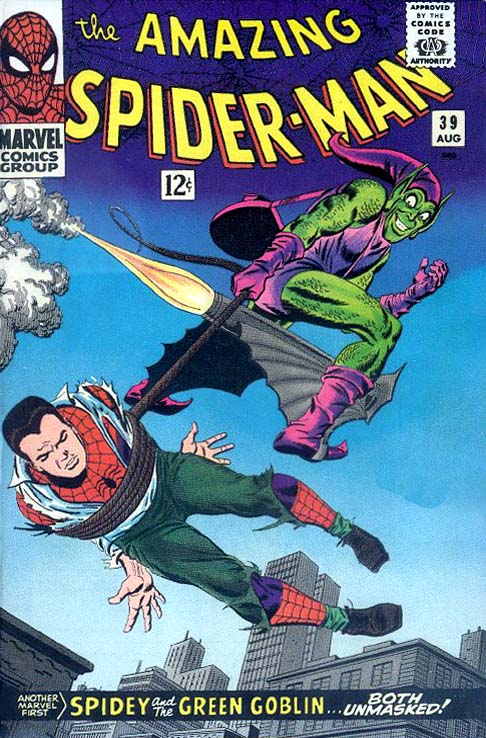
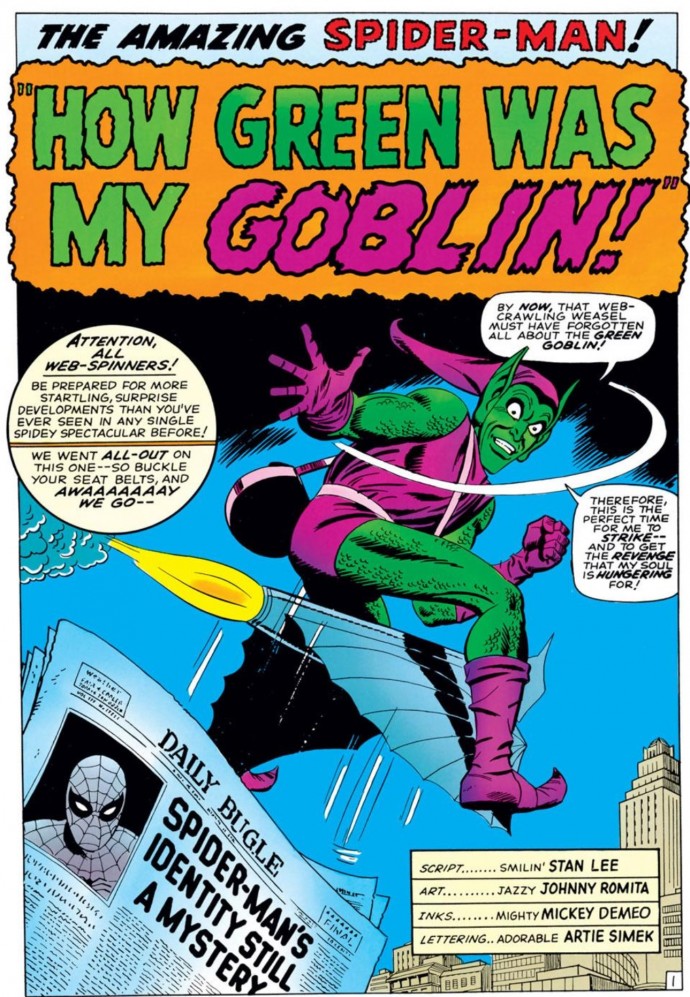
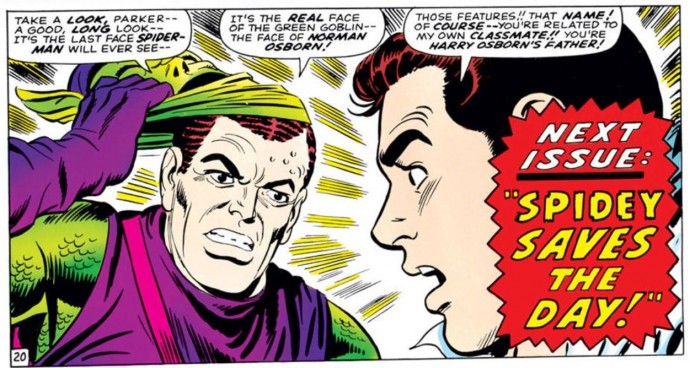
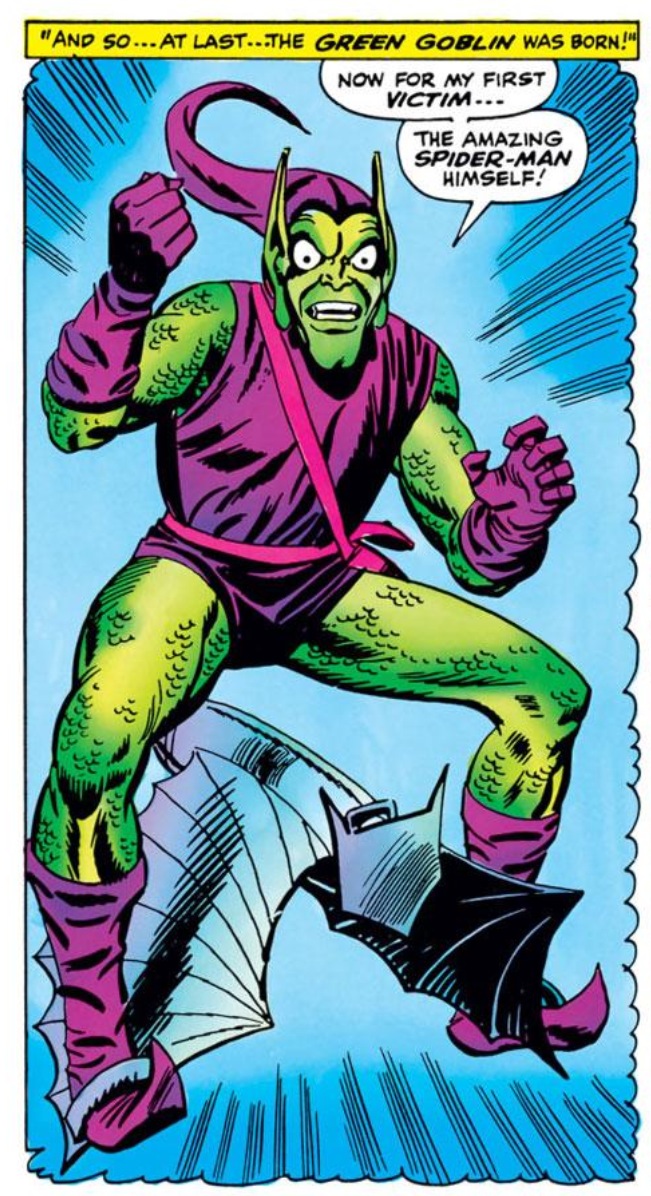
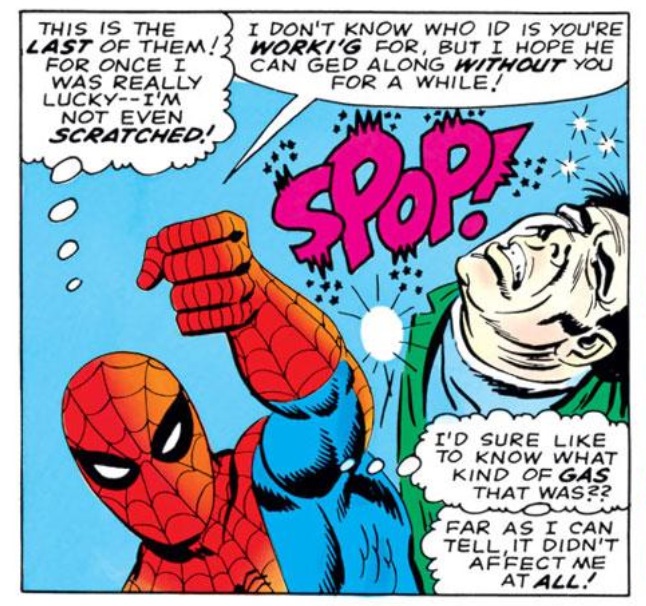
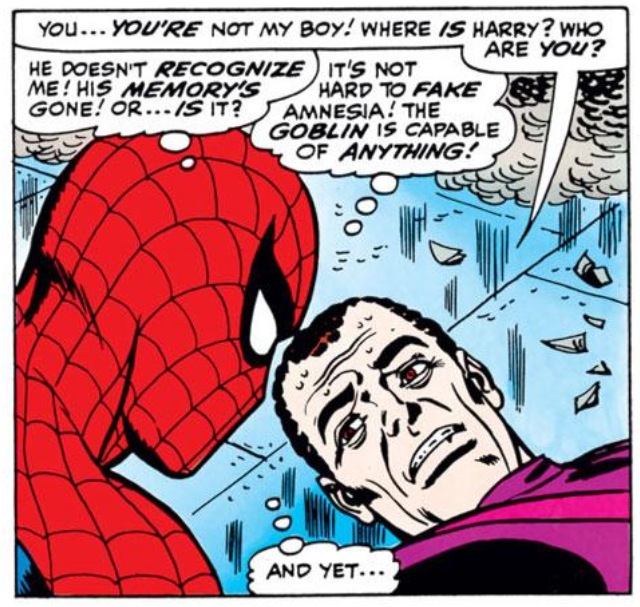
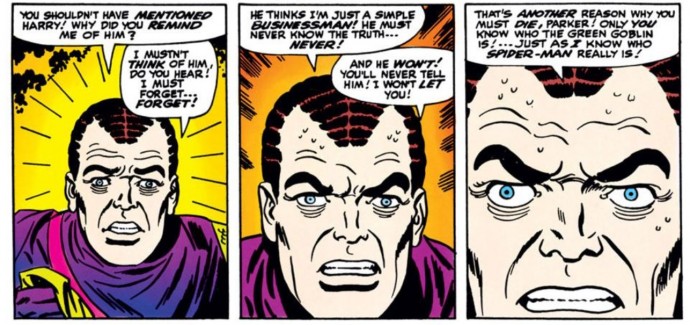
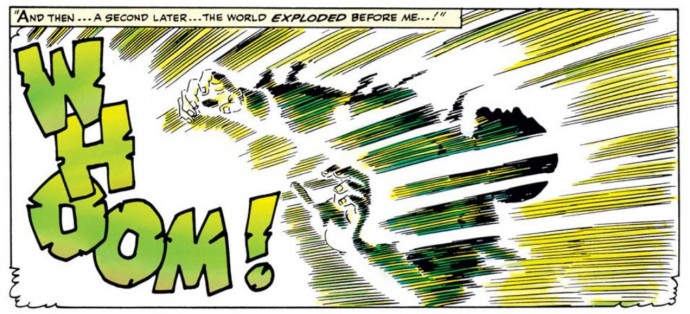

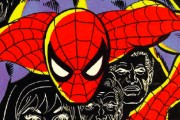
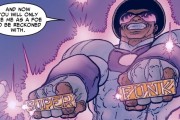
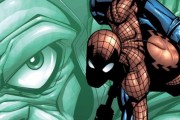
Your best review in what has been a great countdown. I think Romita was a huge improvement over Ditko. Don’t get me wrong, one cannot discount Ditko’s contribution. But Romita brought realism to the art work, beautiful splash pages and incredible action! Man, he is great.
Also, the cover of 39 is probably the best cover ever!
Actually, a few years back, Ditko came out and said that the Goblin was always going to be Osborn. So this old story has been laid to rest.
“So certainly, the GG [Green Goblin] could hardly be any reason for me quitting Marvel”
“Now digest this: I knew from Day One, from the first GG story, who the GG would be… I planted him in J. Jonah Jameson’s businessman’s club.”
“I planted the GG’s son (same distinct hair style) in the college issues…”
From Steve himself.
There’s an interview from Romita himself in book written by Tom DeFalco which I think is the culprit of perpetuating this rumor. I’ve heard that Steve himself has denied this but never read the actual interview. Regardless, I think it’s a stupid debate. On my podcast, I compared it to people blaming Yoko Ono or Linda McCartney for breaking up the Beatles. These guys were headed for a split no matter what. It would never be about one thing.